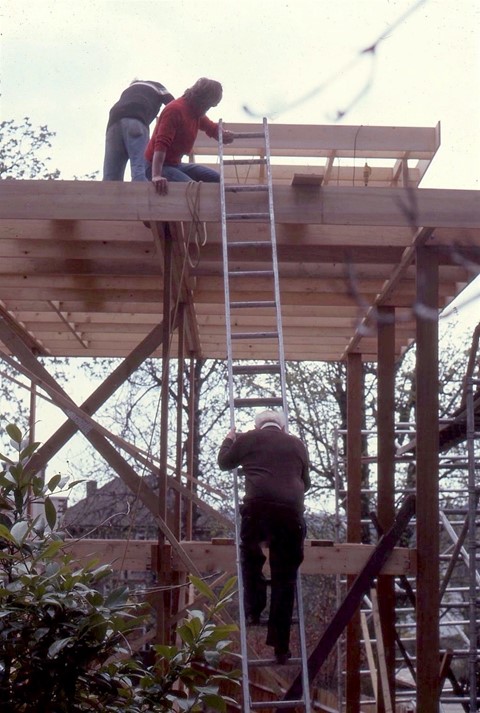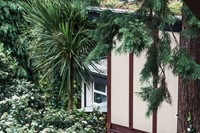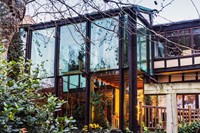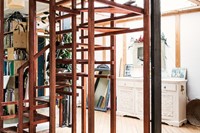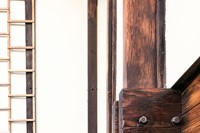The residents of Walter Segal’s utopic housing project in south east London talk about the architect’s quiet legacy
For the fistful of years between 1977 and 1987, architect Walter Segal put a small group of people from a much-ignored corner of south east London at the forefront of a self-build housing revolution. Based on a prototype he built in his own north London back garden, the architect had created a timber-based construction system that allowed anyone with enough enthusiasm and a scrap of land to construct their own home. In the late 1970s Lewisham Council made this social housing fantasy reality by dedicating two previously unusable plots of land to the project. The scheme was promoted in local media and residents were encouraged to throw their names in a hat from which, initially, less than 20 residents would be selected and charged with the build of their own home.
Nestled among the sleepy streets of Forest Hill, phase one – know as Segal Close – was completed in 1982, while the second phase was built between 1984 and 1987. Having died suddenly in 1985, the architect never lived to see the completion of his dream, and, most profoundly, was unable to further develop the concept for wider consumption. While his social housing revolution was cut short, the people of these single-street estates saw their lives changed unrecognisably, embracing the innovative approach to residential life he envisioned and even naming phase two Walters Way in his honour.
More than three decades on from completion, the Segal self-build community thrives on its unique social identity. Upon arrival at Walters Way, visitors are met not by one speaking on behalf of a group, but by a collective of voices keen to share their stories, some of whom – like Earl Brown and his family – are original self-builders. Other residents include journalist Alice Grahame and photographer Taran Wilkhu, who in 2017 penned and published Walters Way & Segal Close: A Look at Two of London’s Most Unusual Streets.
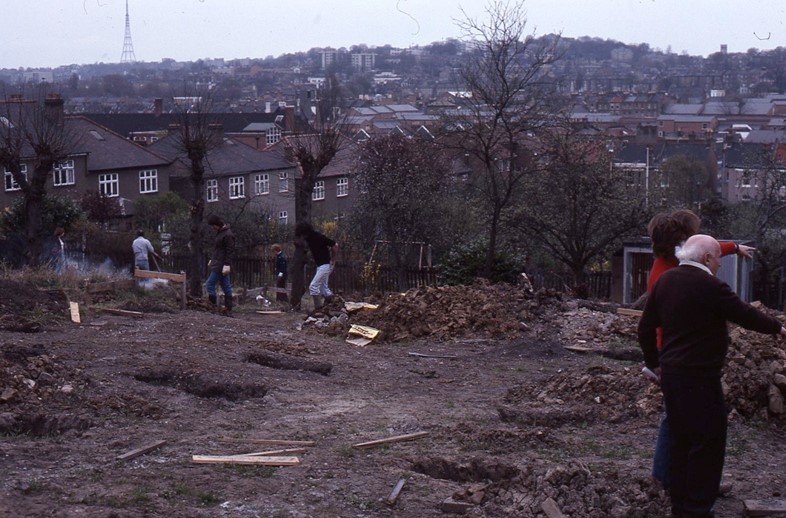
On getting to know Segal…
Alice Grahame: “There’s not been that much interest in Segal houses up to now. It’s original research and I think that’s why I like it. When we moved into the house we wanted to know more about it and find out who this guy was. There’s only a tiny paragraph on Wikipedia and that’s about it. I suppose we are trying to preserve his legacy, and also to encourage people to take an interest and do their own projects.”
On preserving the architect’s quiet legacy…
AG: “One of the people who built a house in Walters Way is called Dave Dayes and his wife, who sadly died a couple of years ago, was called Barbara Hicks. Dave and Barbara had a son called Kareem and when he got into his twenties he was looking around London and noticing the real problem for anyone his age. Buying and renting is too expensive and there’s no social housing you can apply to, so he set up an organisation called the Rural Urban Synthesis Society, for communities to get together and produce housing that is suitable to their needs. It took about eight years but they got planning permission and are now starting on their first housing project, in the Ladywell area.”

On the starting from nothing in the 1980s…
Earl Brown: “My friends, when they heard I was building a house, said: ‘You sure you’re gonna be alright mate?’ At the time I was living in a little flat in Brockley. I saw this advert thing in the press so me and my mate Lincoln went down to Lewisham Town Hall and put our names down. Some did finish kind of quick because they had a lot of help and stuff like that, but it was hard, especially in the winter time. You’d leave you bucket of water with brushes in and suddenly it would be frozen solid. Everybody was a bit shaky – especially in ’87 when we had that bad storm that Michael Fish said weren’t going to happen – but you know what, all these stood up solid.
“When you think of the time that we took to build it, it’s not bad. Most people didn’t have any building skills, I was a plasterer and Archie was a chippie and that was it. We had to learn a lot. It was hard, but you know in the end it was worth it basically. Everybody who had a plot worked on their thing, but if you had a bit more knowledge than somebody else you could give some help. I used to go to work, come here at 5pm and stay until 2am. Sometimes I’d drop a sleep down here! I tell you what though, if I had to build another one of these again and had all the materials it would go up like that – you don’t forget.”
Walters Way & Segal Close, published by Park Books, is available now.
